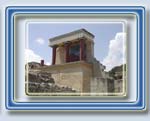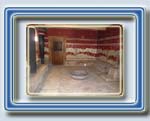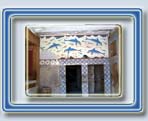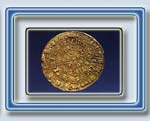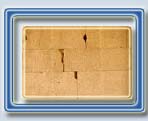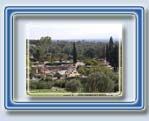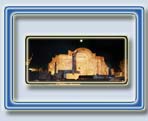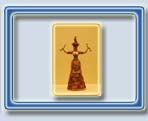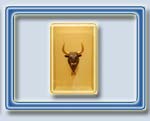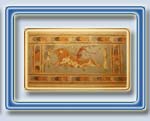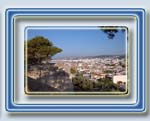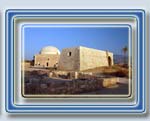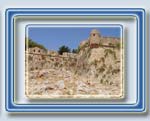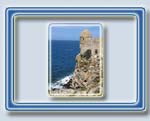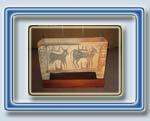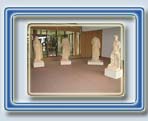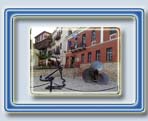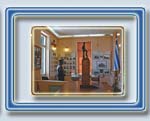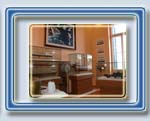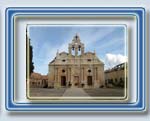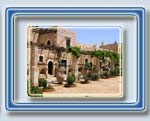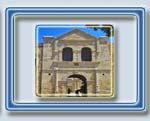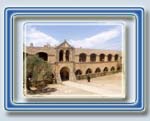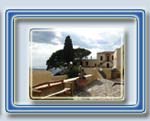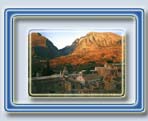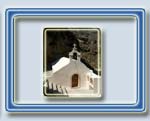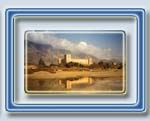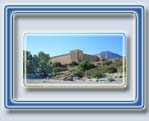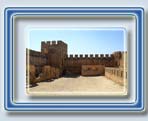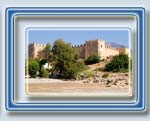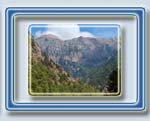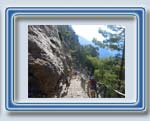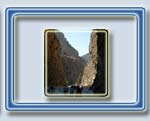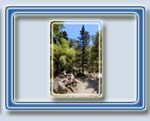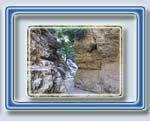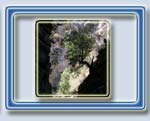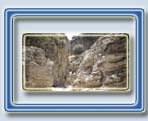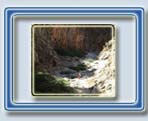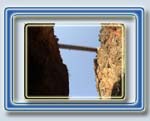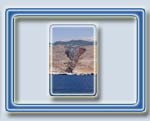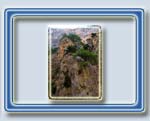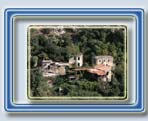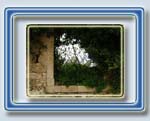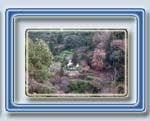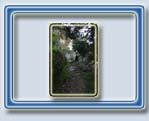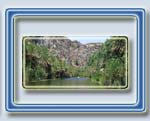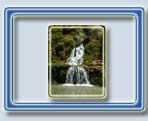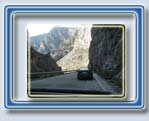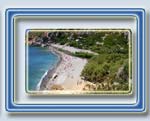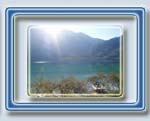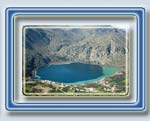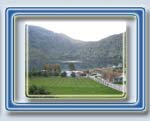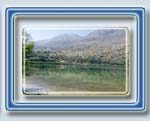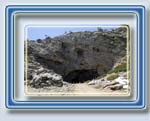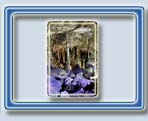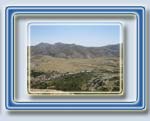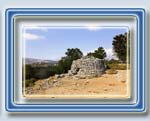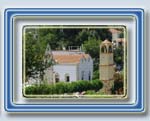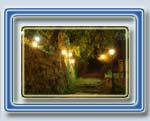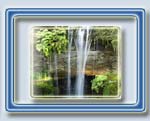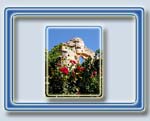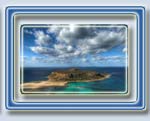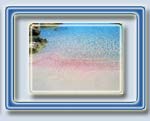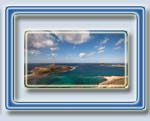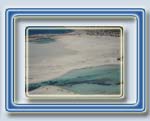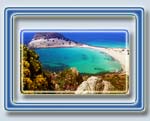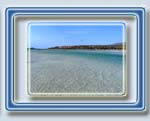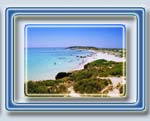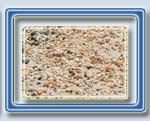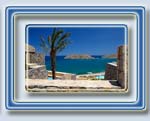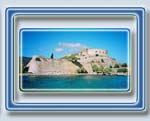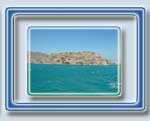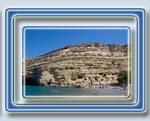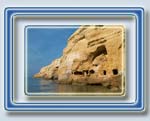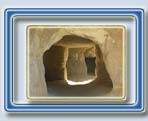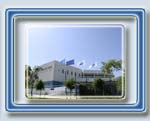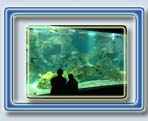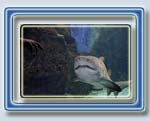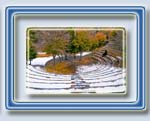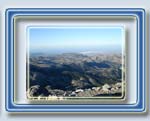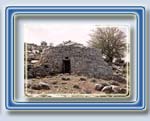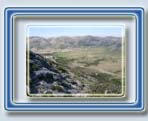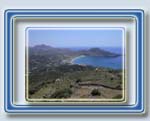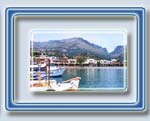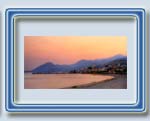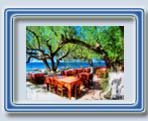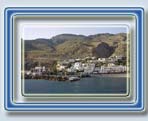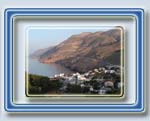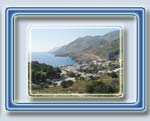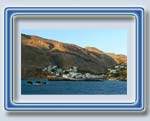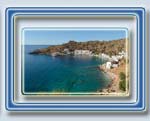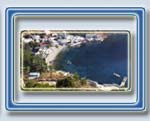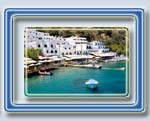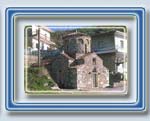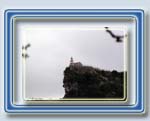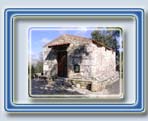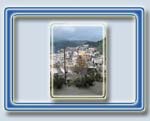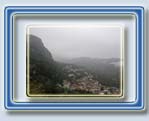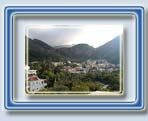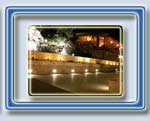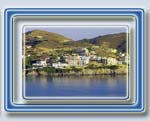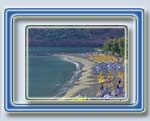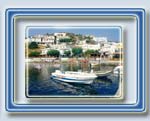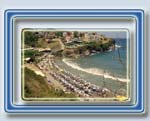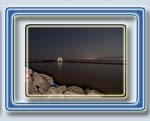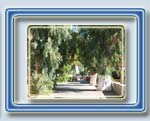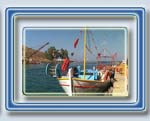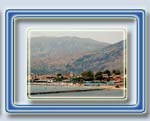
Beautiful places to visit around Crete
Crete is an island which offers great variety. It has magnificent beaches and enormous mountains. Gorges, rivers and lakes. Quiet, isolated corners and cosmopolitan places. Small villages and big cities. It is hard to choose a spot and when you think you have seen everything there is always something more to surprise you.
Through this site we will try to give you a general view, along with some useful information for some of the places we believe are more than worth visiting. We will not really dedicate much time describing the big cities of the island but we will wonder in its inner parts where its true beauty hides.
Maps where the suggested areas are marked can be found in the section of Useful Information.
So let us get started.
Historical Areas and Museums
Natural Beauties and Creta Aquarium
- Samaria Gorge,
- Imbros Gorge,
- Aradaina Gorge,
- Miloi,
- Preveli and Kourtaliotiko gorge,
- Kournas Lake,
- Idaion Andro and Nida Plateau,
- Argiroupoli,
- Gramvousa - Ballos,
- Elafonisi,
- Spinalonga Island,
- Matala,
- Creta Aquarium (Sea World)
Picturesque Villages
Suggested Routes
- Rethimno-Koxare-Preveli-Preveli Monastery- Plakias-Frangokastelo-Chora Sfakion- Rethimno
- Rethimno-Perama-Axos-Anogia-Idaion Andro
- Rethimno-Georgioupoli-Kournas Lake-Episkopi-Argiroupoli
- Rethimno-Chania-Kissamos-Gramvousa
- Rethimno-Kissamos-Elafonisi
- Rethimno-Heraklion-Knossos-Gouves-Creta Aquarium
- Rethimno-Spili-Agia Galini-Faistos-Matala-Gortyna
- Rethimno-Heraklion-Hersonisos-Elounda-Spinalonga-Agios Nikolaos
Ιστορικά Μνημεία και Μουσεία
Knossos
This archaeological site is located at a distance of 5 kilometres on the south-eastern part of Heraklion, near the old homonym settlement on a hill. There came to light after countless efforts the Minoan Civilisation. There was built in 1900 B.C. the magnificent palace of Knossos which was ruined by an earthquake in 1700 B.C., only to be built again on the exact spot.
In order to conceive its grandeur let us say that it covered the whole hill extending in an area of 20.000 square meters, on some of its parts there were five floors and in total there were 1.400 rooms. A number of scientists claim the famous Labyrinth was the palace itself as it had so many rooms that it was impossible for someone to move in it without help from the palace personnel. Nearby there were several other buildings to serve the needs of the people working there.
Today’s visitors can wander in the remains of that masterpiece, admire the reconstructed parts, the architecture and the frescoes and imagine what life was like thousands of years ago.
Throughout the palace there are signs in many languages informing visitors for what they see and there are also specialized guides who offer a more detailed tour of the area.
Faistos and Gortyna
Faistos is the second most important archaeological site. It is situated at a distance of 62 kilometres on the south-eastern part of Heraklion, built at an altitude of a hundred meters from the sea.
Its palace was one of the most important Minoan court , the second largest (about 18.000 square meters) after Knossos and was built on the west side of the biggest and richest flat land in Crete called Messara. From that point, the local king could control not only the goods produced there but also the exit to the sea and the ports of Messara gulf. This palace was not any less than the one in Knossos and actually had the exact same fate- destroyed and rebuilt. During the excavations held in that area, archaeologists found the famous Tray of Faistos, which had hieroglyphics printed spirally on both sides. In spite of all the efforts made by scientists, until today it has not been possible to decode the text or the importance of the Tray.
Ruins of both buildings still lay in the area while visitors can also admire a wonderful and contrasting view: on one side there is the open space of Messara’s flat land and on the other the mountainous volume of Psiloritis.
Gortyna is found at 45 kilometres from Heraklion, on the way to Faistos. During the great pick of Minoan Crete it was just an insignificant town which started to flourish when the two big cities decayed and reached its zenith in the Roman times when it became the capital of Crete. In that area archaeologists discovered the biggest inscription ever. Dodekadeltos or the Great Inscription was written in a peculiar way: the direction of the words changed in every line alternating from right to left and vice versa. It consists of 12 columns and expanded in 630-640 verses from which 605 are preserved until today. It dates in 450 B.C. and constitutes a complete Law Code reflecting the justice of the Minoan Era. Its size and content make it the most important monument of Greek Epigraphy and it is the only such monument to be preserved in the whole world. It also was the foundation of the legislative system as it contains clauses about personal freedom, claiming a slave, breaking a marriage, about the equality of the sexes and women’ s rights, about adoption, relations among parents and children and so on. Gortyna’s laws did not impose severe punishment but they anticipated a detailed procedure regarding justice and demanded objective proof for someone’s guilt or innocence. They constitute great examples for their freedom of spirit and their progressiveness and they are Crete’s biggest contribution in the universal spiritual civilization. In the same area visitors can admire the Roman Conservatory and the perennial sycamore, a tree that never loses its leafs and is one of the rarest species in the whole world.
Heraklion Museum
The Archaeological Museum in Heraklion is one of the biggest and most remarkable museums in Greece and one of the most important in Europe. Its exhibits include representational samples from all the periods of the Cretan prehistory and history which cover 5.500 years from Neolithic age to roman times. Naturally, a special place is kept for the unique masterpieces of Minoan art which visitors can see and admire in all its course. The collection of Minoan antiquities is the most important worldwide and the museum is fairly considered unique in its kind. In total, there are twenty halls, thirteen on the basement and seven on the first floor. Their organisation is mainly based on the chronological presentation of the findings, which are presented in proportion to the locations they were discovered in order to provide a complete and global picture of the Cretan civilization as it was manifested in various areas and in its most important centres. There are also explanatory passages, pictures, designs and models of the monuments.
Unfortunately, temporarily the Museum is closed due to renovation works but there is one hall exhibiting the most important findings and collections for the visitors to see
Fortezza Fortress
Rethimno’s Venetian fortress hangs on the steep rocks on the northern extremity of the peninsula, in an area which was ideal for the control of the town, the hills and the coasts and it is known as the biggest Venetian castle ever. It was designed in such a way that could provide sanctuary for the population and included a church, a hospital, warehouses and barracks. It began being built in 1573 and was completed in 1580 aiming to protect the town from the Turkish menace. Finally, only the Venetian guards settled there as the space left for the construction of private houses was too little. The possible drawbacks of the fortress, such as its low height and the lack of dike were compensated by the carefully studied organisation of the inner space.
After the year 1646 and the seizure of the town from the Turks, Fortezza will not subject to great changes. There were some additions and completions at the bankings and the surrounding grounds of the fortress while there was an increase in the number of houses that were built inside it. At the beginning of the 20th century its inner part was almost completely full with houses. Gradually, the houses were transferred out of the fortress whilst the local authorities demolished all the ruined buildings.
Today, the Fortezza fortress is the most important monument in Rethimno and the trademark of the town. Every year, during the months of July and August the local Renaissance festival is held there, a festival which hosts important artists from all over Europe.
Rethimno Museum
The archaeological museum was founded in 1887 by the educational association of Rethimno. Initially it was housed at the Loggia building in the centre of the old town but the exhibition space was insufficient so it was transferred in 1991.Today, the Museum exhibits many findings but still a lot of them are kept in its storehouses due to lack of space.
The pentagonal building which houses the museum is located across Fortezza’s main gate. Originally it was a fortress, a complement to the fortification of the castle but later on and until the 1960s it operated as a prison something which changed its initial form. Afterwards, it was retrofitted and became what it is today.
There, visitors can admire impressive collections of prehistoric antiquities and truly amazing samples of urns. Furthermore, the coin collection exhibited there is one of the most impressive and interesting in the island, while it competes others in Greece.
The exhibits are representative of all periods and the people in charge tried to place them in chronological order giving special emphasis to the prehistoric collection due to the recent findings coming from Armenous and Elefterna.
Chania Naval Museum
The two storey building of the Museum is located at the extremity of the venetian port and covers an area of 840 square meters. It includes about 2500 exhibits such as model ships, various instrumets and devices, paintings, heirlooms, objects found at the bottom of the sea, shells, pictures and more.
Really distinguishing is the collection of model ships of all kinds and periods, the truly interesting collection of shells, the model bridge of a destroyer ship of the Second World War with all its equipment in actual size as well as a hall which houses a collection from the battle of Crete including newspaper cut-outs, maps, artillery, helmets, bullets and more relevant objects.
Arkadi Monastery
The Holly Monastery of Arkadi was built in 1587, it is situated at a distance of 23 kilometres from the town and constitutes the first complete fortress to be created during the last period of the Venetian dominion. After its destruction in 1866, it was completely rebuilt and was erected to its former shape. Only a half burnt temple on the right side of the Agia Trapeza and a canon ball wedged in the perennial cypress on the right side of the church are the signs of the lives lost almost 140 years ago.
For the Cretan people, this Monastery is the most important monument in the recent history of the island. In 1866, as well as in former rebellions of the Cretans against the Turks, it became sanctuary and operational base for the rebels since it is located in a strategic position in the area. The Turks decided to destroy the monastery unleashing against it 15.000 soldiers and 30 canons. In the monastery there were 964 people, 325 men and the rest women and children. However, all of them refused unanimously to abandon it. The battle lasted all day long and the monastery did not fall since the besieged resisted vigorously and caused the Turkish army severe casualties. The second day was different, though: the main gate was destroyed by the canons and the Turks managed to get inside. The battle continued body to body but the Turks were too many. The monastery’s abbot called everyone who wanted and could, to gather in the powder-keg so as not to fall in Turkish hands. And this is actually what happened. Everyone who could not fight anymore, women and children, they all gathered there and when they could not resist anymore and the Turks were trying to break the powder-keg’s door, all those people sacrificed themselves by shooting the powder and blowing everything up in the air.
They died for their country, for their religion, they sacrificed themselves because they wanted to be free. 854 Cretans, men women and children, were slaughtered or blown up killing at the same time about 1500 Turks. 114 were taken as prisoners and only 3 - 4 managed to escape.
After the holocaust, the destruction and the desertion of Arkadi, the «Cretan Matter» managed to open the doors of the European diplomacy. Its burning flame mutined all the European spirits, it changed their attitude and policy towards Crete and laid the foundations for its liberation.
Today, visitors can admire the erected monastery, can move in the places where those people walked, visit its museum and pray with all their hearts for people to stop killing each other. UNESCO has declared Arkadi a European Monument of Freedom.
Preveli Monastery
It is situated at a distance of 38 kilometres from Rethimno. In reality, there are two monasteries, Kato Preveli and Piso Preveli at a distance of about 2 kilometres one from another. The first monastery was built during the Venetian dominion (on its bell it is incised the year 1594). Locked and derelict, it stands alone discouraging any potential visitors. On the contrary, the second monastery is beautiful, prim and hospitable. It is open to visitors and constitutes part of the contemporary history of the island. It played an important role during the Cretan revolutions, and especially in the year 1866, during which it became a refuge for the rebels. The same tradition continued during the Second World War, the Battle of Crete and in the following years, when it saved the lives of hundreds of allies and locals hiding them in its premises and in the surrounding mountains and offering food to eat.
The monastery gives out a sense of tranquillity while the Libyan sea expands on its front. Near the monastery there is the magnificent Kourtaliotiko gorge.
Frangokastello
Frangokastello is a rectangular fortress built by the Venetians in 1371 on the south-western part of the island. It covers an area of 4.000 square metres and its main entrance overlooks the Libyan sea. On its walls, above the main gate, people can still see the shield and the blazons picturing St Marco’s lion and Venetian crowns.
The castle itself has its own long and bloody history. It was initially built by the locals with the help of the Venetians. This fact is ironic: the Venetians constructed it to fight not only the pirates but also to repress the frequent rebellions of the locals. Finally, the Venetians remained there for less than a century and during the years it came to the possession of various conquerors. During the Turkish invasion and, every time there was a rebellion against the Turks, the castle was used by the locals for their defence. Later, during the Cretan revolution (1866-1869), it was utilised as a rampart for the Turkish soldiers who disembarking at Sfakia.
Today, it is the main sight of the area since it provides unusual scenery for the holiday makers of the crystal clean beach which is situated right next to it. The castle is open all year round, and especially during the summer months a lot of concerts and balls are held in its premises.
Natural Beauties
Samaria Gorge
Definitely, it is Crete’s most famous area. It is situated at its western part, in the White Mountains and constitutes Europe’s biggest gorge with a length of 8 Kilometres. It starts from Xyloskalo (altitude 1200 meters) in the Omalos Plateau and ends at the seaside village of Agia Roumeli in south Crete. The impressive geological formations and the rich fauna and flora compose a picture of unique beauty along the gorge.
The visitors follow a 16 kilometre long, central path which is considered as the most walked on path in Greece. Inside the gorge people can get in touch with nature and forget all their problems. The vegetation is thick along the gorge and every minute new sceneries unwinds in front of their eyes. Springs with crystal clear water are everywhere. In its middle there is a small village where lamberjacks used to live in before its characterization as a National Forest. This village is abandoned and currently used by the guards, the gorge’s doctor and the visitors as a rest place. Towards its exit, the gorge becomes narrower and at Sideroportes area people can actually touch its two sides which at this point are 350 metres high. Exiting the gorge, the visitor needs to walk a distance of about three kilometres in order to reach the picturesque village of Agia Roumeli and its beautiful beach.
Samaria is not a simple walk for those who are not familiar with hiking but anyone can walk it easily as long as there are no health problems.
This is a highly recommended place for anyone who loves nature and hiking.
Imbros Gorge
It is a relatively small gorge as it is only 8 kilometres long but it stands out for its magnificent beauty. Its entrance is at the Imbros village in Sfakia and at an altitude of 780 metres. Hiking it can take up to 3 hours. The visitor will be really impressed from the "doors",these are the most narrow parts of the gorge. There are so narrow that the rocky sides of it in some parts completely block the view towards the sky.
Aradaina Gorge
The impressive Aradaina Gorge starts from the White Mountains, at the southern part of the village and ends at the sea and the beautiful beach of Marmara.
At the start the visitors will pass the Aradaina Bridge where they will remain impressed by the view of the gorge which lies 138 metres below their feet. During the summer, this bridge is used by those who love bungee-jumping. From there a path leads to the gorge. Walking it may take 3-4 hours since Aradaina is at a distance of about 7 kilometres from the sea.
Miloi -Rethimno
At an altitude of 270 metres and at a distance of 7 kilometres from Rethimno there are two settlements called Palioi (Old) and Neoi (New) Miloi having a poplulation of 39 inhabitants. The picturesque village of Kato Miloi was built really low, on the South- Western verge of Vrisinas Mountain, on the banks of a small river. By the river there was a significant number of mills (miloi in greek) using its water as moving power. It is a great area for walks since it is easily accessible and near the town. This beautiful settlement has a great cultural value but unfortunately, a few years ago, it was deserted due to landslide. The houses were abandoned and so were the watermills. The inhabitants moved to a nearby location called New Settlement of Miloi and built their houses again.
The thick vegetation, the beautiful scenery and the running waters invite visitors to walk through the gorge and to cross it reaching the town of Rethimno.
Preveli and Kourtaliotiko Gorge
Probably one of the most beautiful places in Crete. The gorge’s entrance is from Koxare village found in the Prefecture of Rethimno. Following the Kourtaliotis River the gorge ends in Prevelis Lake. It is distinguished for its thick vegetation and the high steep rocks which have a height of 600 metres on both of its sides.
In the middle of the road that crosses the top of the gorge there is a parking area and several paths leading to the church of Agios Nikolaos. The gorge is narrow and has a wild beauty. The river that crosses it separates into five different streams which then unite forming five smaller lakes and a waterfall. There are several species of wild animals and birds living there.
Where the river meets the sea, nature continues to impress us since on the left and right side of the river there is a small forest with palm trees making the area seem like a tropical paradise.
Kournas Lake
It is the only natural lake found on an island in the whole Mediterranean. Its biggest length reaches 1080 metres and its biggest width 880 metres. It covers an area of 579 000 square metres and its deepest part reaches 22.5 metres!!! (3.5 metres lower than the surface of the sea).It is the «youngest» lake in the European Continent and it is surrounded by mountains creating a really impressive scenery.
Visitors can swim in its calm waters, rent a boat or a sea bike or enjoy a meal at the tavernas. We suggest that you try a sweet called «sfakiani pita», a kind of pie made with cheese and honey on top.
Idaion Andro and Nida Plateau
At Psiloritis and at a distance of 79 kilometres from Rethimno, is located the famous Nida Plateau as well as Idaion Andro, the cave where Zeus, the king of gods of the Greek mythology, was born.
Nida Plateau is situated at an altitude of 1400 metres. Nature here is gorgeous, especially during the spring while the view is breathtaking. A lot of visitors begin their climbing walks from this place while several camp during the summer. Here you can visit «mitata», that is stone buildings with a dome which accommodate shepherds but are also used for other purposes such as the production of cheese and other dairy products. It is actually said that the technique used for their construction has remained unaltered for thousands of years and dates back to the Minoan era.
A few metres further, you can find one of the most important caves in Greece: Idaion Andro. As Mythology narrates, it was the place where Zeus grew up, nursed by Amalthia and protected by Nymphs and Kourites. The excavations which took place inside the cave brought to light a number of important findings proving that the cave was used as a place of worship from the ancient years until today. Amongst the objects found there were coppery shields, iron arms and tools, gold and ivory items. The impressive dimensions of its entrance and the enormous size of the first hall are an extremely awesome sight. The cave is open and entrance is free, something which means that we are all responsible for its protection and preservation.
Argiroupoli
At a distance of 27 kilometres from Rethimno and following the Old National Road, visitors can reach Argiroupolis. This village, built on the ruins of ancient Lappa, is full of green, while crystal clear cold water runs from its springs creating small waterfalls as it descends the slope. Those springs are called Agia Dinamis (Holly Power) referring to the divine origin of the power of water but also to the small church of Agios Ioannis built in the cave from where the water spouts. Those springs daily supply about 20.000 cube meters of water, watering Rethimno and other areas. In the older days, there were also many water mills grinding cereals and olive seeds but today only one of them has been preserved and still works. The area around the springs is full of tavernas offering visitors many delicious local dishes. In the hottest days of the summer this place is a true oasis
Gramvousa - Ballos
Kissamo’s gulf in the western part of Chania, also includes a complex of small islands and capes. The small island called Imeri Gramvousa and the beach of Ballos are two of its most impressive spots, two places which have been touristically developed in the present years. A lot of cruises towards these beautiful islands are organised daily from the port of Kasteli in Kissamos.
Apart from the unspoilt, arid scenery, the green-blue waters and its impressive view, this island also has a long history through the centuries, a history proven by the castle on its top. This castle was built in 1579 by the Venetians. The island’s geometrical shape (it looks like a triangle) and the Venetian’s perfect organization turned the castle into an excellent fortress, which the Turks managed to dominate only after bribing the Venetian castellan! A few years back, the cape was visited only by the local fishermen but today things have changed. Its distinguishing feature is its beach which is very wide and covered with fine white and red sand. At a certain part, this beach forms a tiny lagoon with shallow waters.
Elafonisi
Elafonisi is a small tropical heaven on earth with shallow, crystal clear waters, fine white sand and countless shells. It is a completely flat small island, separated by the land by a few metres of shallow sea and has given its name to the greater area.
A tragic story happened here : It was Easter Sunday of the year 1824 when the Turks slaughtered 40 Cretan warriors, more than 600 women and children while many more, according to witnesses, were sold as slaves.
Spinalonga Island
Spinalonga is a small island which blocks the Elounda bay at the north. It got its name when it was taken over by the Venetians who named it like that. It was perfectly fortified from all aspects: architecturally, aesthetically and structurally. Initially, it was used for military purposes so the buildings existing there met the needs of the Venetian guards. Later, it became refuge and operational base for the Cretan rebels who utilized it throughout the Turkish dominion.
In 1903, the Cretan State ordered the isolation of the leprous and decided to create a special institution in Spinalonga which would house and help those suffering from Hansen’s disease. So in the next years all the people in Crete suffering from leprosy moved there to go on their hard lives. Gradually, the conditions in the island became better, especially compared to the other Greek clinics until 1957 when the disease was fought.
It is not just a beautiful island but also a place filled with emotions and historical memories.
Matala
It is an area of particular beauty situated at a distance of 67 kilometres on the south-western part of Heraklion. Its distinguishing feature is the caves carved along the rocky mountain ending at the sea. In ancient times, those caves where used as houses and places of worship, while during the first and second century they were used as burial places. And then of course during the 60s and the 70s, a great number of hippies crowded the area and lived in them. Those caves along with the sandy beach form a semicircle on both sides from which hang big rocks. As previously mentioned the beach is sandy and the water is very clear offering moments of joy and relaxation.
Creta Aquarium (Sea World)
A small world of the Mediterranean, the Greek seas and its tropical surroundings measuring 600 metres long, await for the visitors who will have the chance to see and admire 2.500 organisms. Separated into 200 species exposed in 32 tanks with a total capacity of 1.600.000 litres. Those huge tanks alternate depending on the species, their natural habitat and their habits. Passing through them is an unforgettable experience with more than 200 sea species swimming on the right, on the left or even in front of you. They are especially formed to create the illusion of actually being into the sea and along with the dark halls, visitors get the feeling that they swim with the fish. Do not forget to admire the colourful tropical fish, the sea anemones as well as the jellyfish. You will definitely remain enthusiastic. The Aquarium is equipped with audio-visual systems of the latest technology and can welcome 150 people. Daily and during its working hours visitors can also watch documentaries related to the sea ecosystem.
Picturesque villages
Anogia
Anogia is a traditional village situated at the northern foothill of Psiloritis right on the limit between the prefectures of Rethimno and Heraklion and has a population of 2.507 inhabitants. According to tradition, Anogia was founded by cattle-breeders at the beginning of the 13th century; it constituted a centre for revolutionists during the Turkish dominion and for members of the resistance against the Germans during the last war. Furthermore, it was one of the main places where the German army commander, general Von Kraipe was led and kept as a hostage before being taken to Africa. As reprisal, in 1944 the Germans killed all the men of the village and literally tore down all its buildings apart from one church dedicated to Agios Ioannis the Baptist which is full with exquisite frescoes. Anogia was rebuilt after the war by its inhabitants whose main occupancy is cattle-breeding, handicraft and weaving. We suggest you try the genuine Cretan cuisine at the local tavernas while you can also admire the wonderful textiles manufactured by the village women. From there, one can easily visit Idaion Andro located at an altitude of 1499 metres and at a distance of 22 kilometres.
Every year, on the last week of July, Anogia holds Hyacinthia, a cultural festival praising love, as sustained by its aspirator. It is a festival hosting singers and artists from all over Greece. During these festivities, at the village of Saint Hyacinth there is an exhibition of traditional products from local producers.
Plakias
Plakias is located at Crete’s southern part and at a distance of 32 kilometres from the town of Rethimno. It combines traditional atmosphere with a number of bars and tavernas situated along its beach. Originally, it was a small fishermen’s village with no more than 50 inhabitants but during the last few years it was transformed into a sea side resort with a great number of visitors. There are many marvellous sandy beaches with crystal clear water, although the sand has a distinguishing grey colour. Above Plakias there are also many smaller traditional villages still keeping their original colour and their genuine Cretan style. There is also a small boat taking visitors to excursions to Prevelis beach.
Chora Sfakion
Sfakia is located at the south eastern slope of the White Mountains and at a distance of 75 kilometres from Chania. The ground there is arid and the scenery is wild. When looking at the imposing Sfakianes Madares (this is how locals call the White Mountains) one is charmed and astonished by the grandeur of this nature. The savageness of this place and of course the sea contributed to Sfakia’s history. Its inhabitants were the only Cretans to occupy themselves with sea transport and commerce during the Turkish dominion. Due to the geographical position of the area and mainly due to the local’s bravery, the Turks never really managed to take complete control of this village even though they burnt it to the ground. During the Second World War and the battle of Crete, it was the place where the allied armed forces disembarked and where the soldiers found shelter and medical treatment.
A distinguishing feature of the locals’ wealth is the stone one-storey and two-storey houses which have been standing there for three or even four centuries with closed yards and small windows. During your visit there, it is definitely worth visiting the unique fortress of the 15th – 16th century called Sfacia or Sfachia naming the whole area. Visitors would also like to visit the monastery of Panagia Thimiani, famous for assemblies taking place at its premises during the Turkish dominion. Finally, another place worth seeing is Daskalogianni’s cave, a place which operated as mint during the Revolution accessible only by boat.
Loutro
This beautiful small village is one of the island’s retreats. Constructed amphitheatrically on the south part of Chania, all its houses are white one storey or two storey buildings with blue shutters and doors. It is mainly accessible by sea since there are only some paths connecting it with Sfakia or Anopolis. It is the ideal holiday place, away from crowds, cars and noise and next to beaches with deep blue waters. Recommended for everybody who would like to escape from the city noise and spend some quality time by themselves or with their mates.
Axos
Axos is situated at a distance of 46 kilometres at the south eastern part of Rethimnon built in a rich valley at an altitude of 550 metres on the northern slopes of Psiloritis. It is an extremely fertile village with running waters and an excellent climate constructed under the ancient town of Axos or Oaxos.
A beautiful village with great history from ancient times until today. In this area there have been preserved and reconstructed 19 Byzantine churches while the modern temple of Agioi Apostoloi has been built on the verge of a deep ravine reminding us of Meteora. There have also been excavated a lot of important findings covering all the eras of Cretan History and are now on display in various museums around the island.
Its traditionals cafes still work like they did in older times while the locals welcome visitors and enjoy their company. Furhtermore, you will have the chance to admire the wonderful textiles manufactured by local women.
Spili
Spili is a wonderful mountainous village situated on the foothills of mount Kedros at the north western part of the island and at a distance of 27 kilometres from Rethimno. It is an area filled with green, a lot of waters and plenty of natural beauties most of which have not been exploited yet.
In the village’s Main Square with the perennial sycamore trees, visitors will remain impressed by a fountain with 25 lion heads from which run clean crystal spring waters. There are also plenty of shops selling traditional products as well as restaurants and cafeterias. Above the square, narrow paths lead to the upper part of the village from which the view is really breathtaking.
Bali
It used to be a small fishermen’s village which turned into a seaside resort and is located at a distance of 28 kilometres westwards. Built on an elevated small peninsula it offers an excellent view of the sea and the gulf. There is also a small port full of restaurants, bars, cafeterias and three beaches on three narrow bays protected from winds. It is a good choice for a nice day out especially on windy days when the sea is rough in Rethimno.
Georgioupoli
At the main square with the huge eucalypts there are plenty of cafes and tavernas. There is also a wonderful beach with fine white sand, where Armiros river flows into. It is 9 kilometres long and completely protected from north-western winds. A small path leads to the small picturesque church of Agios Nikolaos which is built on the rocks and literally into the sea.
Διαδρομές που προτείνουμε
Rethimno - Koxare - Preveli- Preveli Monastery - Plakias - Frangokastelo - Chora Sfakion - Rethimno
Definitely a beautiful route round the prefecture of Rethimno. We believe that Kourtaliotis gorge is one of its most beautiful parts. Just before arriving at Preveli Monastery, on the right side, (you will see there a small stone bridge and a taverna) there is a turn leading directly to Preveli beach. The road is earthen and about two and half kilometres long but it will take you without any further discomfort right to the gorge. From that point you can walk deeply into the gorge.
At Plakias you will find restaurants offering delicious seafood and while getting towards Chora Sfakion for Rethimno you will have the chance to admire the impressive view of Imbros gorge.
Map of the route ...
Rethimno - Perama - Axos - Anogia - Idaion Andro
Following this route, you will leave behind the beaches of the island and you will get on its mountains and particularly on the highest of all.
Anogia is built at an altitude of 1300 metres while Idaion Andro at 1400 metres, therefore visitors ascend above the midst of Psiloritis. The view is really breathtaking with Nida Plateau spreading right at your feet.
Do not forget to try the local recipes offered at all the tavernas. We are sure that you will not regret it.
Map of the route ...
Rethimno - Georgioupoli - Kournas Lake - Episkopi - Argiroupoli
ΜA relative short trip appropriate for the days that you don’t wish to get far from Rethimno. You will have the chance to admire beautiful places filled with green. Through Georgioupolis there is a road leading to Kournas Lake.
Map of the route ...
Rethimno - Chania - Kissamos - Gramvousa
Gramvousa is one of the most beautiful places in Crete and is really worth visiting it. On your way there you will also pass from Chania. We recommend that you make a stop, enjoy your coffee at the beautiful old port and visit the old town. Reaching Kasteli, the best way to visit Gramvousa and Balos beach is by embarking on the small boats that has regular trips from Kissamos port.
Furthermore, Kissamos is probably the best place in Crete for somebody who would like to enjoy delicious fish.
Map of the route ...
Rethimno - Kissamos - Elafonisi
Another long but also beautiful route, Elafonisi island is gorgeous and covered with fine white sand filled with seashells. The scenery is really fantastic.
Map of the route ...
Rethimno - Heraklion - Knossos - Gouves - Creta Aquarium
Knossos is certainly one of the most well known places in Crete and is definitely worth visiting and admiring it. Do not forget to visit Heraklion Museum.
The Aquarium is not far from there and it can surely be included in your visit.
Map of the route ...
Rethimno - Spili - Agia Galini - Faistos - Matala - Gortyna
Spili is a beautiful village and you will surely have a good time visiting it and enjoying your coffee at one of its numerous cafes situated at its central square.
Agia Galini is a small picturesque village on the south coast and it is worth visiting it while being in the area.
Map of the route ...
Rethimno - Heraklion - Hersonisos - Elounda - Spinalonga - Agios Nikolaos
A small boat departs quite often from Elounda to Spinalonga. Talk to the locals there, they will surely have a lot of stories to tell about this beautiful and filled with emotions place.
If there is time and you would like to continue further, do not forget to visit the beautiful town of Agios Nikolaos, since it is a place that will not disappoint you
